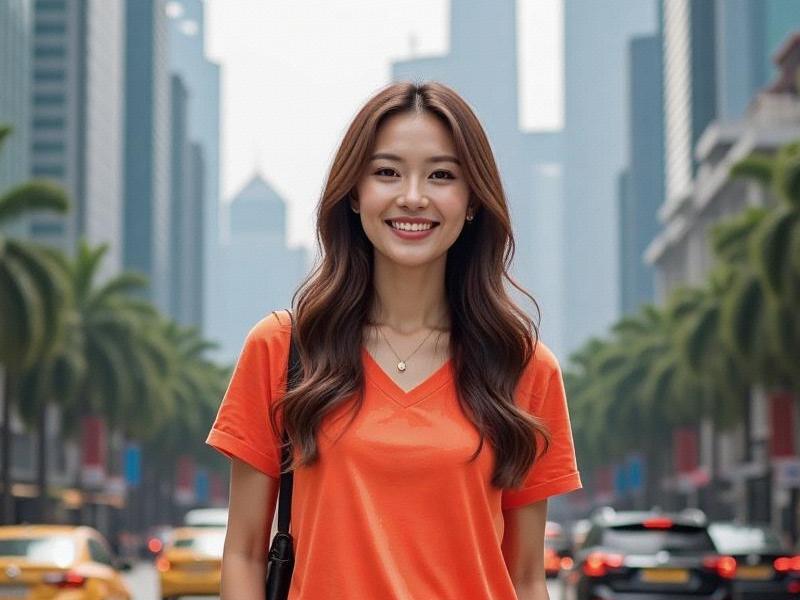This in-depth feature explores how Shanghai women have crafted a unique feminine identity that blends traditional Chinese values with global sophistication, creating a new archetype of Asian womanhood.

The Shanghai Woman Code: Decoding the Allure of China's Most Cosmopolitan Females
The Shanghai Paradox
At 8:15 AM on a weekday morning, two strikingly different scenes unfold simultaneously in Shanghai's Jing'an district. In one corner of the Kerry Center, 28-year-old investment banker Vivian Zhang sips matcha latte while reviewing stock charts on her tablet, her tailored Max Mara suit contrasting with the jade bracelet inherited from her grandmother. Just blocks away, 65-year-old retired teacher Madame Wu performs her daily tai chi routine in Jing'an Park, her silk qipao moving gracefully with each deliberate motion. These women represent two generations of Shanghai femininity - vastly different yet united by an unmistakable metropolitan essence.
Historical Evolution of Shanghai Femininity
1. The Golden Age (1920s-1940s):
- "Modern Girls" of the treaty port era
- First generation of educated working women
- Fusion of qipao fashion with Western styles
2. The Revolutionary Period (1950s-1970s):
- Masculinization of female fashion
- Women in traditionally male occupations
- Suppression of bourgeois femininity
3. The Reform Era Transformation (1980s-2000s):
- Return of fashion consciousness
- Professional women's resurgence
- Western beauty standards influence
4. The Contemporary Shanghai Woman (2010s-present):
- Global-local identity synthesis
- Career-family balance innovation
- Digital age self-expression
The Shanghai Woman Blueprint
Modern Shanghai women exhibit:
1. Style Synthesis:
- Luxury brands with traditional elements
- Seasonally adaptive fashion
- Signature "effortless chic" aesthetic
上海花千坊龙凤 2. Career Mastery:
- Bilingual professional capabilities
- Entrepreneurial mindset
- Corporate leadership presence
3. Cultural Navigation:
- Traditional filial values
- Modern relationship expectations
- Global citizen consciousness
Fashion as Cultural Statement
Shanghai's style evolution:
1. Qipao Renaissance:
- Modern reinterpretations
- Workplace-appropriate designs
- International designer collaborations
2. Global-Local Fusion:
- International brands with Chinese details
- Sustainable fashion leadership
- Street style innovation
3. Beauty Standards:
- Natural makeup trends
- Skincare over cosmetics
- Rejection of extreme plastic surgery
Economic Powerhouses
Shanghai women dominate:
1. Corporate Leadership:
- 38% of senior management positions
- Finance and tech sector prominence
上海夜生活论坛 - Startup founder success stories
2. Consumer Influence:
- Luxury market decision-makers
- Real estate purchasing power
- Education investment priorities
3. Creative Industries:
- Fashion design leadership
- Digital content creation
- Cultural entrepreneurship
Social Phenomenon
Key aspects include:
1. Marriage Trends:
- Later marriage acceptance
- Selective partnership standards
- Dual-career household models
2. Parenting Philosophy:
- Bilingual child-rearing
- Balanced achievement focus
- Grandparent support systems
3. Lifestyle Choices:
- Health and wellness focus
- Continuous education
- Travel as self-investment
Challenges and Triumphs
Navigating:
1. Workplace Barriers:
上海娱乐联盟 - Glass ceiling realities
- Maternity leave challenges
- Gender pay gap issues
2. Social Expectations:
- "Leftover women" stigma
- Beauty standard pressures
- Family obligation balancing
3. Personal Fulfillment:
- Self-actualization pursuits
- Mental health awareness
- Work-life integration
Future Trajectories
Emerging trends:
1. Digital Empowerment:
- Female-led tech innovation
- Social media influence
- E-commerce entrepreneurship
2. Global Leadership:
- International organization roles
- Cross-cultural ambassadors
- Thought leadership platforms
3. Cultural Redefinition:
- New feminine archetypes
- Traditional value reinterpretation
- Asian feminist perspectives
Conclusion: The Shanghai Woman Legacy
As sociologist Dr. Mei Ling observes: "Shanghai women have created something unprecedented in Chinese history - a feminine identity that maintains cultural roots while fearlessly claiming global citizenship. Their greatest achievement isn't in rejecting tradition or blindly embracing modernity, but in synthesizing both into something entirely new."
From the qipao-clad socialites of 1930s Shanghai to today's tech-savvy executives, Shanghai women continue to redefine what it means to be a modern Chinese woman, offering an inspiring model of how to honor one's heritage while writing new chapters of personal and professional achievement.